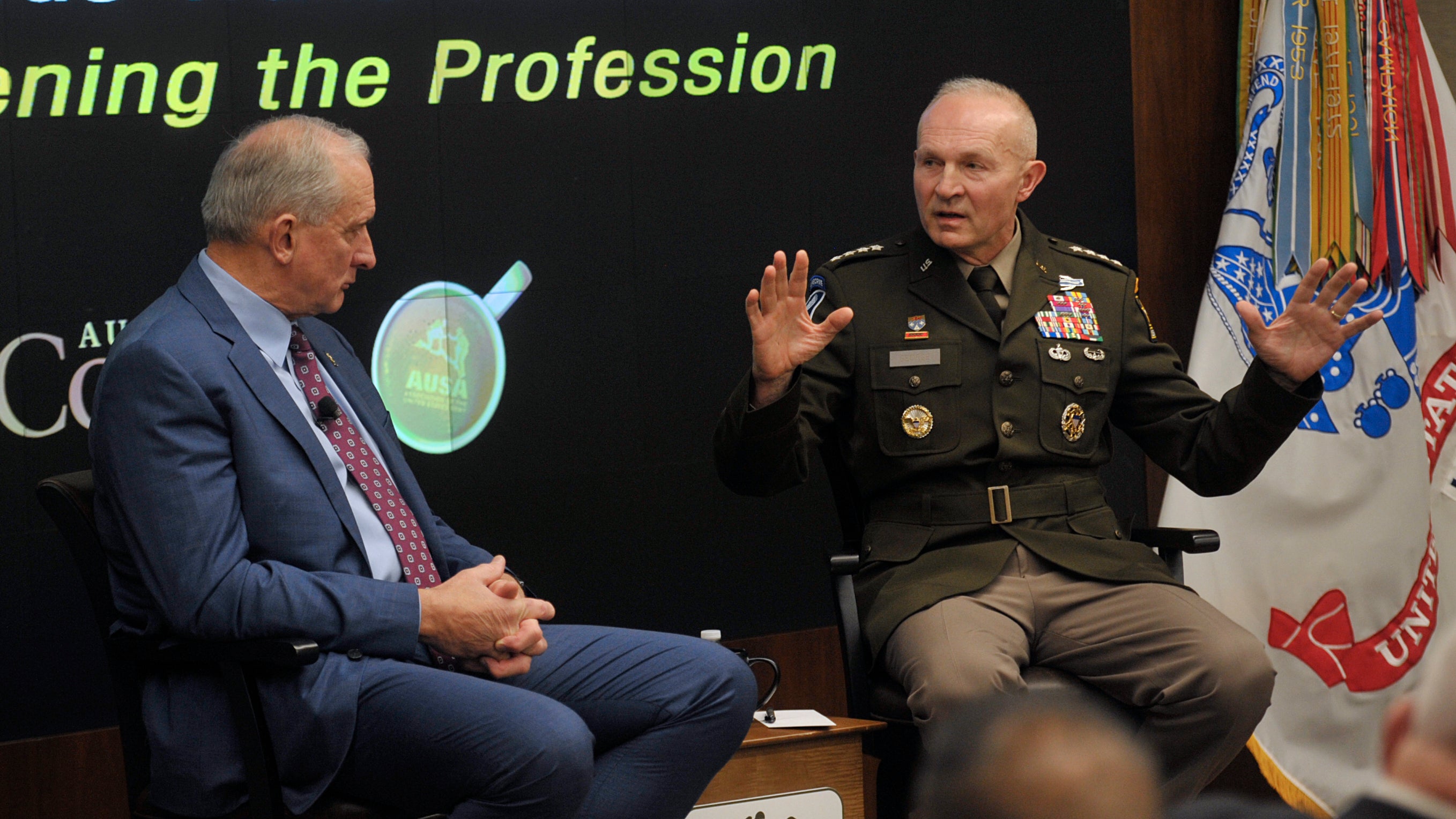George: ‘Sense of Urgency’ Fuels Army Transformation
George: ‘Sense of Urgency’ Fuels Army Transformation

The Army must move with a sense of urgency as it contends with an increasingly volatile and complex world, Army Chief of Staff Gen. Randy George said.
“The difference today is the tech disruption we’ve had, the volatility is completely different, and just how fast things are spinning on the tech side,” George said Feb. 6 during an Association of the U.S. Army Coffee Series event. “I think it’s completely different from what we’ve seen, and there’s a lot of implications with that and how we do business and how we change.”
As he travels across the force, George said he’s been able to see how soldiers are adapting to the challenges of missions around the world. “I’ve been really getting out there and talking to our troops,” he said. “What we want to do is focus on our warfighting mission and building cohesive teams.”
George said he also is focused on how the Army can “unencumber” commanders and soldiers, such as getting rid of excess equipment, so that they can focus on the important tasks.
“Warfighting, I always tell everybody that that has to be the focus,” George said. “I want leaders at every level to understand that’s what we’re focused on. If you’re not relaying that message all the way down with what you’re doing, then we need to recalibrate what we’re doing.”
As the Army prepares for the future fight, George said he’s looking at lessons from the war in Ukraine and fighting in the Middle East. This means prioritizing the network and looking for ways to incorporate unmanned aerial systems, robotics, 3D printing and other emerging technologies to bolster the force.
It also means minimizing units’ footprints—digital and physical—on the battlefield.
“The network has to be the No. 1 priority,” George said. “You cannot communicate, you cannot command and control, everything we do across our warfighting functions depends on our network.”
In addition to building a reliable, secure network, the Army must have a network that’s mobile and agile. “When you’re on the battlefield, you don’t want to be seen, you want to blend into the environment,” George said.
During a recent visit to the National Training Center at Fort Irwin, California, George said he observed as the 1st Armored Division tactical command post was “five vehicles” protected by a radio frequency shield and a small unmanned aerial system, and a command-and-control node “that could be moved in five minutes.” The III Corps command post was hidden in a warehouse with no vehicles parked outside.
“That’s what we need,” George said. “It was very low signature.”
To further experiment with reducing a unit’s digital footprint while maximizing technologies such as robotics and unmanned aerial systems, the Army is selecting a number of brigades for what George calls “transforming in contact.”
The goal is to adjust these formations for what the mission may demand. As an example, George said, a unit may get more unmanned aerial systems and electronic warfare capabilities. Another may get more robotics or the first batch of Next-Generation Squad Weapons. They will then train with these new capabilities and provide feedback on what’s working and what’s not.
“It’s a really busy Army. We have to make some adjustments,” George said. “There’s a sense of urgency to what we’re doing.”
As the Army moves forward with its transformation, George said he tells leaders that everybody has a job to do at every level, and the service must do everything it can to make sure soldiers have the right leaders, equipment and training they need when they go into harm’s way. “We can’t forget that, regardless of how far you get from the front line, that’s our mission, and we need to keep that at the forefront,” he said.

